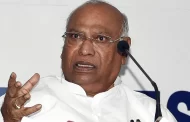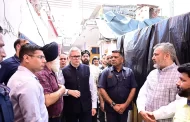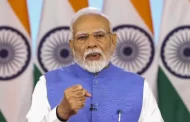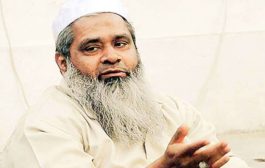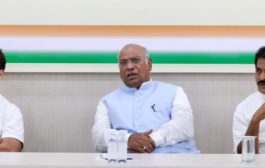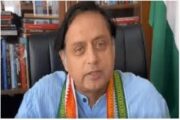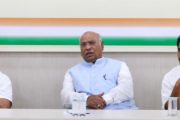BJP won 7 of the 8 seats in 2014 but in the 2018 Assembly polls,the Congress bounced back, winning 35 out of the 64 Assembly seats

With polling completed for 21 of 29 Lok Sabha seats in Madhya Pradesh, the scene now shifts to the BJP strongholds of Malwa and Nimar. The final round of polling on May 19 will cover eight seats in the region. The silence of some party leaders and indifference of voters is haunting the BJP which holds seven of the eight seats here. Out of these, five – Ujjain, Dewas (Scheduled Castes), Khargone, Ratlam and Dhar (Scheduled Tribes) – are reserved constituencies.
The BJP has overlooked senior leaders of the region who haven’t been seen in the campaign. They include former Union Minister Vikram Verma, former state president Satyanarayan Jatiya, former Mayor of Indore Krishna Murari Moghe, Meghraj Jain, Raghunandan Sharma, Makhan Singh, Bha-gwat Sharan Mathur, Anoop Mishra, Dr Satyaran Sharma, Himmat Kothari among others.
Now, how strong is the BJP’s stronghold? The Congress can cheer itself for having won 35 out of the 64 Assembly segments in the region just five months ago. It has five out the eight Assembly seats from Ujjain, six from Dhar, five from Ratlam, six from Khargone, four each from Khandwa, Indore and Dewas and one from Mandsaur.
This aspect needs a closer look. The BJP squandered the advantage from 2104 on many seats. For instance, the party’s lead in the Assembly segments of Indore was reduced from 3.66 lakh to 95,000 in four years. In Dhar, BJP had won by 1.04 lakh votes. It trailed by 2.20 lakh votes in the Assembly segments. In Khandwa, the BJP’s lead slipped from 3.28 lakh votes to 70,000. BJP had won the Khargone seat by 2.57 lakh votes but trailed by 10,000 votes in the Assembly elections.
The Congress had lost the Ratlam seat during the 2014 BJP wave. But in the by-election a year later, it regained the seat by 69,000 votes. The BJP has now narrowed the gap by 40,000 votes. The BJP won the Dewas seat by 2.6 lakh votes but in the Assembly elections, it trailed by 40,000 votes. At Ujjain, the BJP had notched up a massive 3.09-lakh margin win in 2014 but the gap has shrunk to 69,000 votes now. Though the BJP’s lead in Mandsaur dipped from 3.03 lakhs to 77,000, it retains seven Assembly seats here. Mandsaur has been in focus for farmers’ agitation and the Congress and the BJP are both focusing on rural distress.
Both parties have gone for several changes in the candidates’ list. The BJP dropped winners of Dhar, Indore, Ujjain, Khargone. Its MP from Dewas has become an MLA now. Nirmala Bhuria, daughter of Dilip Singh Bhuria who had lost the 2015 by-election to Kantilal Bhuria, was replaced by GS Damore. The Congress has also invested on new faces in Indore, Ujjain, Dewas, Dhar and Khargone.
Both parties are making the most of available star power for intensive campaigning. Congress president Rahul Gandhi campaigned in Shajapur district on Sunday while Prime Minister Narendra Modi was in Indore and Khandwa. Both parties are focusing on farmers’ issues. Modi tried to mollify Lok Sabha Speaker Sumitra Mahajan who is quite cut up over not just over denial of ticket but over the party’s style of functioning. Modi said if anyone has a right to admonish him, it was Mahajan.
Mahajan, who comes from a traditional family of Sangh volunteers, was fancied to record her 10th successive victory. She was among top ten winners of 2014 with a margin of 4.66 lakh votes. Her anger is over archrival Kailash Vijayvargiya being allowed to call the shots in Indore. Mahajan has a large following and some of her supporters are being cultivated by the Congress. The party leadership tried to turn the nomination of Shankar Lalwani into an event “blessed” by Mahajan. The large Marathi-speaking population in Indore — once ruled by Holkars — was sought to be pacified by inviting Maharashtra CM Devendra Fadnavis. The Congress countered it with a Marathi festival on May 14.
Gujaratis form a key component of the Indore electorate. After Narendra Modi, Gujarat Chief Minister Vijay Rupani is also scheduled to campaign in Indore. This is apparently because the Congress candidate Pankaj Sanghvi, who had secured 3,90,000 votes against Sumitra Mahajan in the 1998 Lok Sabha elections, heads the influential Gujarati Samaj in Indore.
Rahul Gandhi visited the Assembly segments of Shajapur on Sunday and was expected to campaign in Khandwa, Ratlam. His itinerary did not include areas of bigwigs like Digvijaya Singh, Kamal Nath, Jyotiraditya Scindia, Bhuria or Ajay Singh. He covered 16 constituencies of lesser known candidates. Incidentally Modi also avoided campaigning for controversial candidate Pragya Singh in Bhopal. It was left to Amit Shah to hold a road show in Bhopal. Modi, Shah and Union Minister Narendra Singh Tomar were all set to visit the region again.
On her maiden trip to Madhya Pradesh after her formal appointment in the party, Priyanka Gandhi Vadra covered Ujjain, Indore and Ratlam and got very warm response. Her trip coincided with that of Modi. She disarmed the BJP youth who tried to disrupt her campaign by shouting pro-Modi slogans. She got out of the car and wished them well.
Another embarrassing feature of Modi’s tour was to canvass for GS Damore in Ratlam. Damore had, in a press conference, claimed that Nehru should have allowed Jinnah to head the government to avoid Partition. He said Jinnah deserved the position more than Nehru. The Congress leaders exploited the faux pas to embarrass Modi.
source: NH



